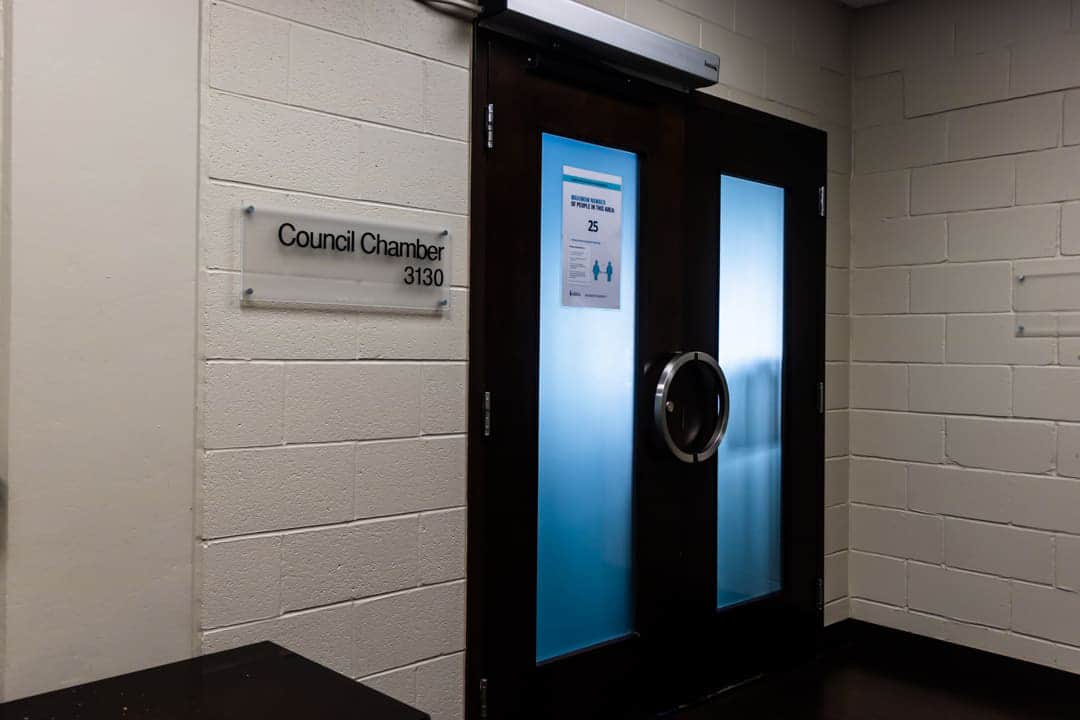On October 3, at UTM’s Campus Council meeting, Mark Overton — dean of student affairs and assistant principal, student services — and Jessica Silver — director of student engagement — presented a program that allows Peel region’s high school students to take courses and workshops at UTM. Additionally, Vice-President and Principal Alexandra Gillespie introduced some UTM-specific growth statistics of student and faculty numbers as well as building space statistics.
High school students at UTM
Overton and Silver presented the new program to grant university experience and financially support self identifying Black, Black African, Afro-Caribbean, or Latinx Black high school students who are considering post-secondary education.
In order to participate in the program, students must be taking the high school courses ENG3U or ENG4U. After completing the courses, the students are awarded university credits as well as a voucher to help pay for their Ontario university application.
Currently, the average application fee for Ontario Universities’ Application Centre is $150 for Domestic and $156 for International students. Applying to more than three programs, regardless of whether the programs are all at the same institution, costs an additional $50 per program.
Some specific programs, including U of T’s Architecture, Commerce, Computer Science, and Engineering programs, require supplemental program fees that range from $40–50.
Currently, UTM has selected 12 students each from Meadowvale Secondary School and Fletcher Meadow Secondary School in the Peel region. Students for the program were chosen based on select criteria: they had to be permanent residents or citizens of Canada, be enrolled as full-time students at either of the high schools, and have a course average of 70 per cent to qualify.
“We hope that they come [to UTM], [but] regardless of where they go, we hope that that point five credit will be transferable, setting them already a credit ahead of their colleagues when they come into postsecondary,” Silver said during the meeting.
The program also hopes to offer students scholarships if they choose to pursue STEM programs.
UTM growth
In her presentation, Gillespie focused on specific areas of growth in comparison to previous years.
Gillespie began by noting some “major dates for our campus’ identity.” In 2003, UTM separated from the Faculty of Arts & Science and became an independent division; in 2016, UTM was in the process of developing its first academic plan; and in 2021, UTM announced the creation of its first strategic framework. The strategic framework expresses UTM’s main priorities and commitments that the campus hopes will strengthen consensus and help guide larger investments.
She explained that from 2003 to 2021, the number of full-time students increased by approximately 151 per cent, from 5,779 to 14,514. In addition, the number of tenured and tenure-track faculty increased from 153 to 386 and the number of full-time nonacademic staff went from 80 to 189. Finally, building space increased from 108,009 square metres in 2003 to 219,109 by 2021 — a 103 per cent increase.
Gillespie then introduced the priorities of UTM’s strategic framework. She explained that “UTM is still going to grow this year… but it’s going to grow at a slower pace… We can make a positive impact by doing better, not just by getting bigger.”
Gillespie also said that the framework would prioritize the environment, with the aim to “foster sustainability and embrace our place to model here the positive environmental impact that UTM researchers create in the world.”
“UTM will soon welcome a new national leading researcher to study an endangered species of Jefferson salamander and to develop strategies for its own campus conservation,” Gillespie elaborated.
The next UTM Campus Council meeting will be held on November 16.


